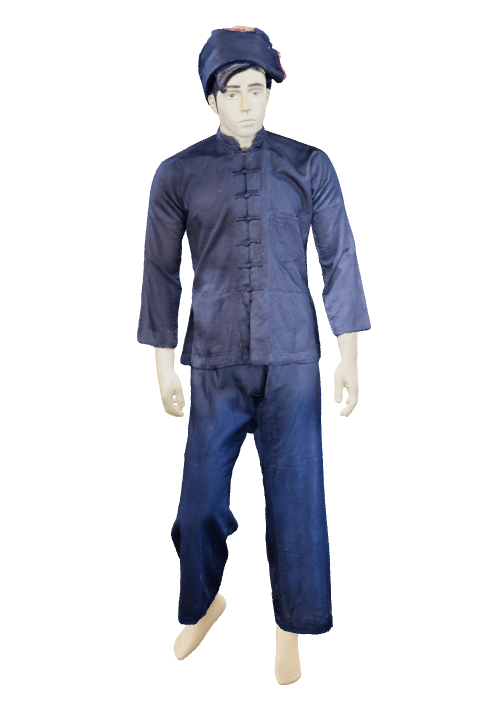CỐNG ETHNIC GROUP
INTRODUCE
- General overview
The Cống ethnic group is also known by other names such as Xá, Xá Cống. Other ethnic groups may refer to them along with their local names, such as Cống Tác Ngá (Cống people in Tác Ngá village), Cống Bó Khăm (Cống gold mine), Cống Nặm Kè-Pù Xung (high mountain), Mằng La. Xắm Khống (iron mine) is a commonly used name.
The Cống people are an ethnic minority belonging to the Tibeto-Burman language group. Currently, the Cống people in Lai Châu have 350 households with 1,565 individuals, residing in the Mường Tè and Nậm Nhùn districts. They are majority concentrated in villages such as Pô Lếch, Nậm Khao and Nậm Pục in the Nậm Khao commune, Mường Tè district.
The Cống people are divided into two local groups: Gold Cống (Cống Vàng) and Black Cống (Cống Đen). The Gold Cống group (Xắm khống Sứ Lư) primarily lives in the Nậm Khao commune (Mường Tè district) and the Nậm Kè commune (Mường Nhé district - Điện Biên). The Black Cống group (Xắm khống Nà Là) lives in the Tắc Ngá, Nậm Chà (Nậm Nhùn district), and Kan Hồ (Mường Tè district) communes.
- Village view
The Cống people in Lai Châu live in mountainous and lowland areas and reside in villages. The village of Cống people is often called following the Thái language, such as Nậm Khao (White Stream), Bó Lếch (Iron Mine), Nậm Kè (Kè Stream), Nậm Pung (Pung Stream),… The size of a village can range from about 30 households in small villages to 60-70 households in larger ones. The houses in the village are arranged in a fishbone shape, taking the village road as the backbone, with each house spaced about 1-2 meters apart.
In Cống villages, houses are closely built next to each other along a hillside, with their backs against the mountain and facing towards the foothill, river, or stream. Between one house and another, there is no private space, and no fences or barriers have been created due to the shifting cultivation lifestyle. The Cong people believe that ghosts often reside in places with large trees, so they do not plant perennial trees.
- Living space
For the Cống people, houses play an important role in both daily life and religious life. Their houses have distinctive characteristics. To begin building a house, people have to choose a favorable location near a water source. Typically, these houses face the foot of a mountain or river.
The Cống people live in stilt houses with 3 or 4 spaces. The stilt houses are constructed of wood, bamboo, thatch, and thatched roofs. The innermost room has the parents' bedroom and kitchen. The middle room has a fireplace as a place for guests and a guest bedroom. Next to the guest's sleeping area is the room of the eldest son and his wife, followed by the rooms of other children, ... The daughter and son-in-law sleep in the outermost room near the door. There are bamboo panels or wooden planks separating each room. The roof is thatched. This house has four high roofs, providing spacious and airy space for the house.
There are two distinctive features inside the houses of the Cống people, distinguishing them from the stilt houses of other ethnic groups. Firstly, the house has only one entrance and one window in the middle space, which can be moved. Secondly, every house has a loft floor behind the top row of columns. This loft floor is constructed by placing a vertical wooden tree running the length of the house and using a horizontal wooden tree to create a frame on both sides. Above it is bamboo mats, folded vertically. The special thing is that on this floor, people set up a house ghost altar.
In Cống people's houses, there are also decorative items that are also household items or musical instruments. In addition to a house in the village, each family also has a "nương" house (house on the hill). The "nương" house is considered another home. Every next crop season, the whole family and livestock will probably go up there to stay until the harvest is over and then return. It does not have an ancestral altar.
















